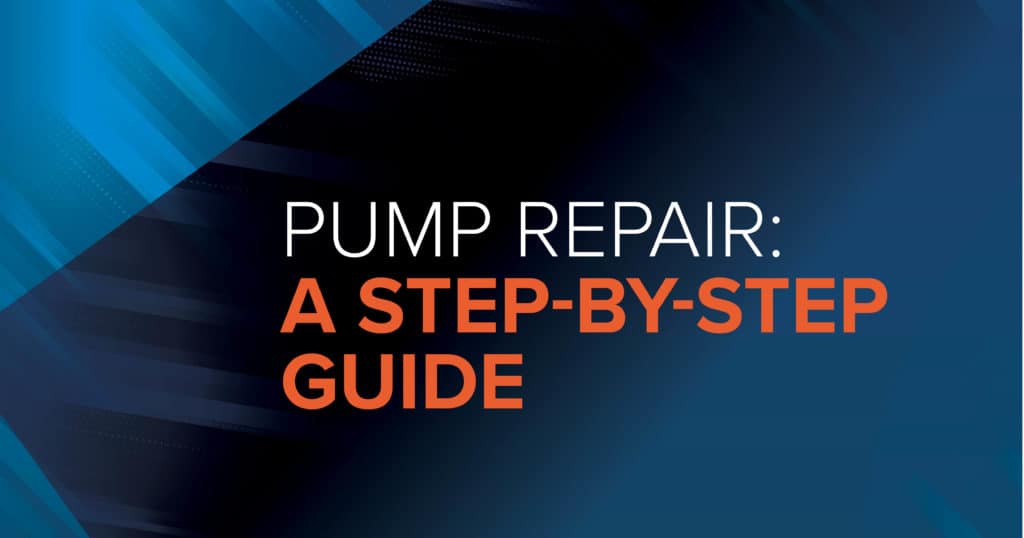Any pump system is prone to failure, especially if standard maintenance isn’t performed properly or if it is being pushed too hard during operation. Breakdowns happen, and sometimes the repairs are minor. Other times, the damage is significant and leads to extended downtime.
Of course, the best ways to prevent pump system failures are to keep up with preventative maintenance, run the pump equipment within its capabilities, and continually monitor performance indicators to identify potential problems before they happen. Let’s discuss how to deal with a failing pump that requires repairs.
- Performance Audit
As you run the pump, it’s critical to monitor its performance over time. When a breakdown occurs or issues start to develop, you need to perform a complete performance and health audit on all the equipment. Consider if there are any strange noises, a loss of suction or discharge, and if there are visible leaks. The use of monitoring technology can help you track key performance indicators during operation, while also helping to identify any issues that could be developing. - Physical Inspection
A complete physical inspection of the pump equipment is crucial to determining the source(s) of any performance problems or failures. Check all the seals, look for damage to the impeller, and figure out where any clogs or leaks are happening. An experienced pump technician should be able to see what is causing the failure. - Use the Downtime Wisely
In addition to determining the specific source of the primary failure, you should use this downtime for pump inspection wisely. Inspect the entire system and all equipment to look for worn seals or bearings. You should inspect the whole system to locate any worn seals and bearings. It is also beneficial to check the baseplate mounts and other mechanical aspects for any signs of concern. It’s better to make multiple repairs or adjustments at once rather than fixing one problem while letting others go ignored. That will only lead to more downtime in the future when those issues get worse. - Parts Checklist
To note any parts that need replacing, create a thorough checklist. Order any replacement components as soon as possible to minimize downtime. In addition, it is a good idea to keep certain common replacement parts on hand, like mechanical seals, gaskets, and other components that wear out over time that are likely to cause problems if they fail. If you remove any components, make notes and take photos to catalog precisely where everything goes when you put it back together. - Determine Who Will Make the Repair(s)
Some pump failures are more significant than others, and not everybody on your staff may be equipped with the skills or knowledge to deal with specific repairs. You will likely handle minor jobs in-house, but they need more than a quick fix. Major repairs may require an outside specialist like DXP Pacific. When possible, we perform field repairs on-site. Although there are times where we have to take the equipment back to our shop for further analysis, we will thoroughly complete the repair with our years of expertise. - Rebuild, Reinstall and Test
The pump equipment needs to be carefully rebuilt and reinstalled after replacing parts and performing repairs. Realignment will likely be required as well to ensure proper performance. To ensure operations safety returns to normal, test the pump system and all of the equipment gently before pushing the pump system to its limits. It’s tempting to fire it back up at full speed to make up for lost time, but this could lead to more downtime if things weren’t done properly. - Consider New Equipment
Suppose failures continue to happen or the pump system’s performance just isn’t what you desire. In that case, it may be time to consider buying new equipment or aftermarket components that can improve your operation. Sometimes, the right pump can pay for itself by providing better performance and increased reliability. - Monitor and Maintain
After undergoing repairs, continue to monitor the pump system’s performance and the health of the equipment.. Keeping a close eye and updating your maintenance plan will prevent the same problems from reoccurring in the future.
If you are experiencing pump problems and need an expert’s touch, contact DXP Pacific today. We offer professional pump repair services and preventative maintenance plans. We can also help you if you are thinking about purchasing a new pump for any processing application. We represent the world’s leading pump manufacturers and will help you make the right decisions.

